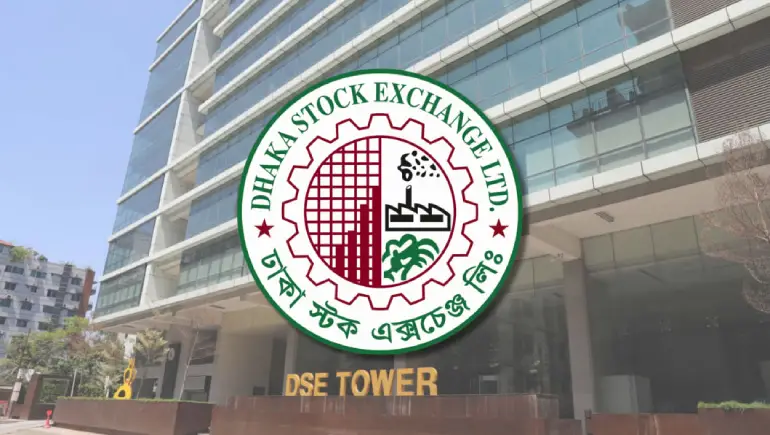
The Dhaka Stock Exchange (DSE) extended its losing streak for the second straight session on Sunday, as investor sentiment remained subdued amid concerns over corporate earnings and macroeconomic stability. Both the DSEX benchmark index and trading turnover declined, reflecting cautious trading behavior across the bourse.
The DSEX, the key index of the DSE, dropped by 22.75 points or 0.38%, closing at 5,933.21, following a 13-point loss in the previous session. The DSES (Shariah index) also fell by 4.63 points to 1,293.57, while the DS30 index, comprising blue-chip stocks, slid 9.87 points to 2,040.19.
Turnover — a key indicator of market activity — declined further to BDT 445 crore, down from BDT 468 crore the day before. Analysts attributed the fall to ongoing uncertainty surrounding inflation, interest rate hikes, and weak performance forecasts from several major sectors.
Among the major sectors, banking, telecom, and cement experienced notable declines. Market insiders noted that retail and institutional investors opted to book profits and minimize exposure ahead of upcoming quarterly disclosures.
Out of the 396 issues traded, 181 declined, 152 advanced, and 63 remained unchanged. Leading the turnover chart were stocks like Genex Infosys, Sea Pearl Beach Resort, and Orion Pharma, although many of them ended the day in the red.
Market analysts suggest that the ongoing pressure on the taka, coupled with rising import costs and uncertain monetary policy signals, continues to weigh heavily on investor confidence. “Until we see stronger indicators of economic recovery and clear policy direction, the market may remain volatile,” said a senior equity analyst at a local brokerage firm.
The Chittagong Stock Exchange (CSE) also mirrored the downward trend, with its CASPI index dropping by 65.78 points to close at 16,857.39.
With earnings season underway, market participants are expected to monitor company reports closely. A shift in investor mood may depend on the strength of quarterly results, inflation control measures, and signals from the central bank regarding future monetary policy.












Comments
There are no comments for this Article.